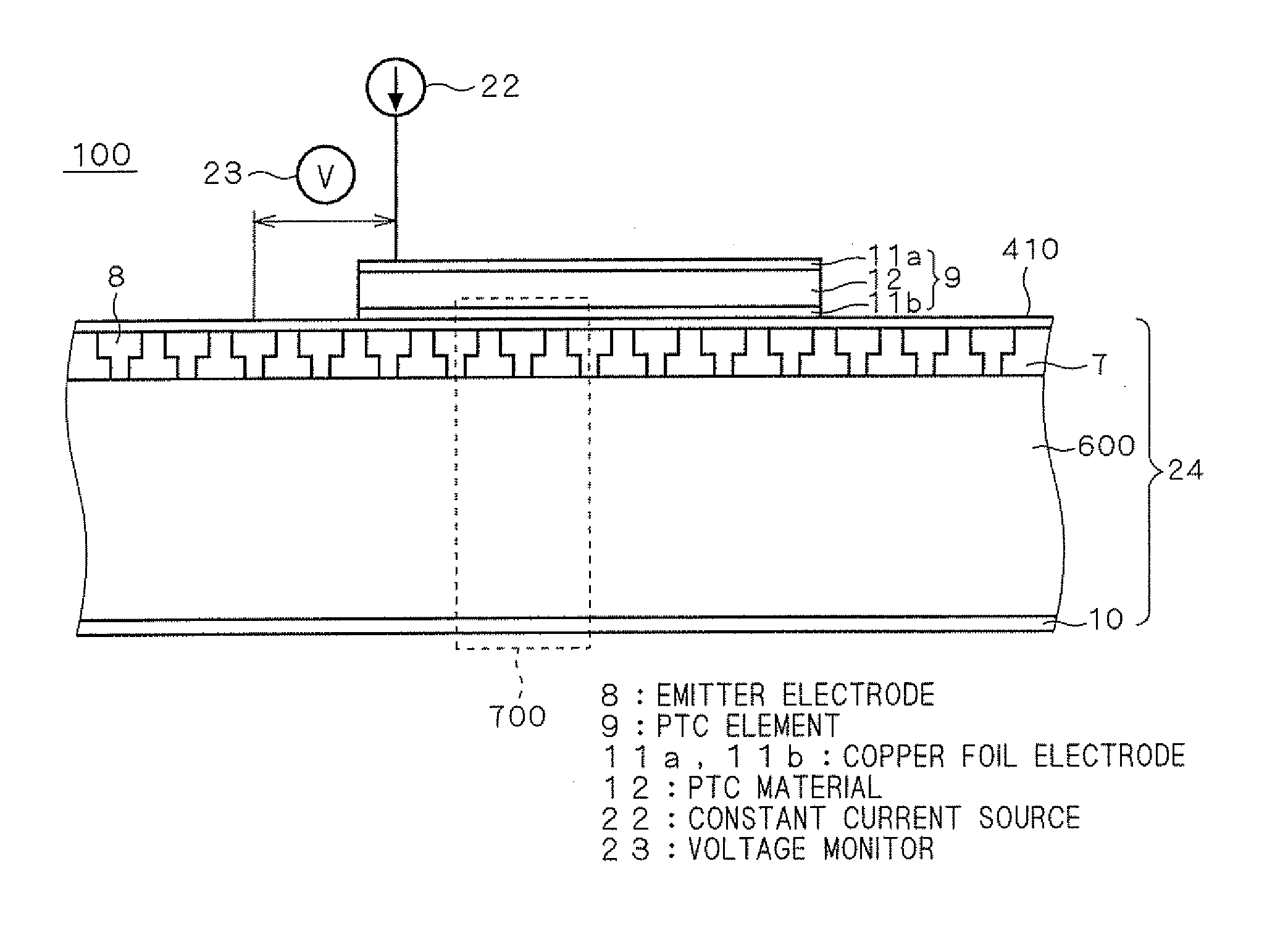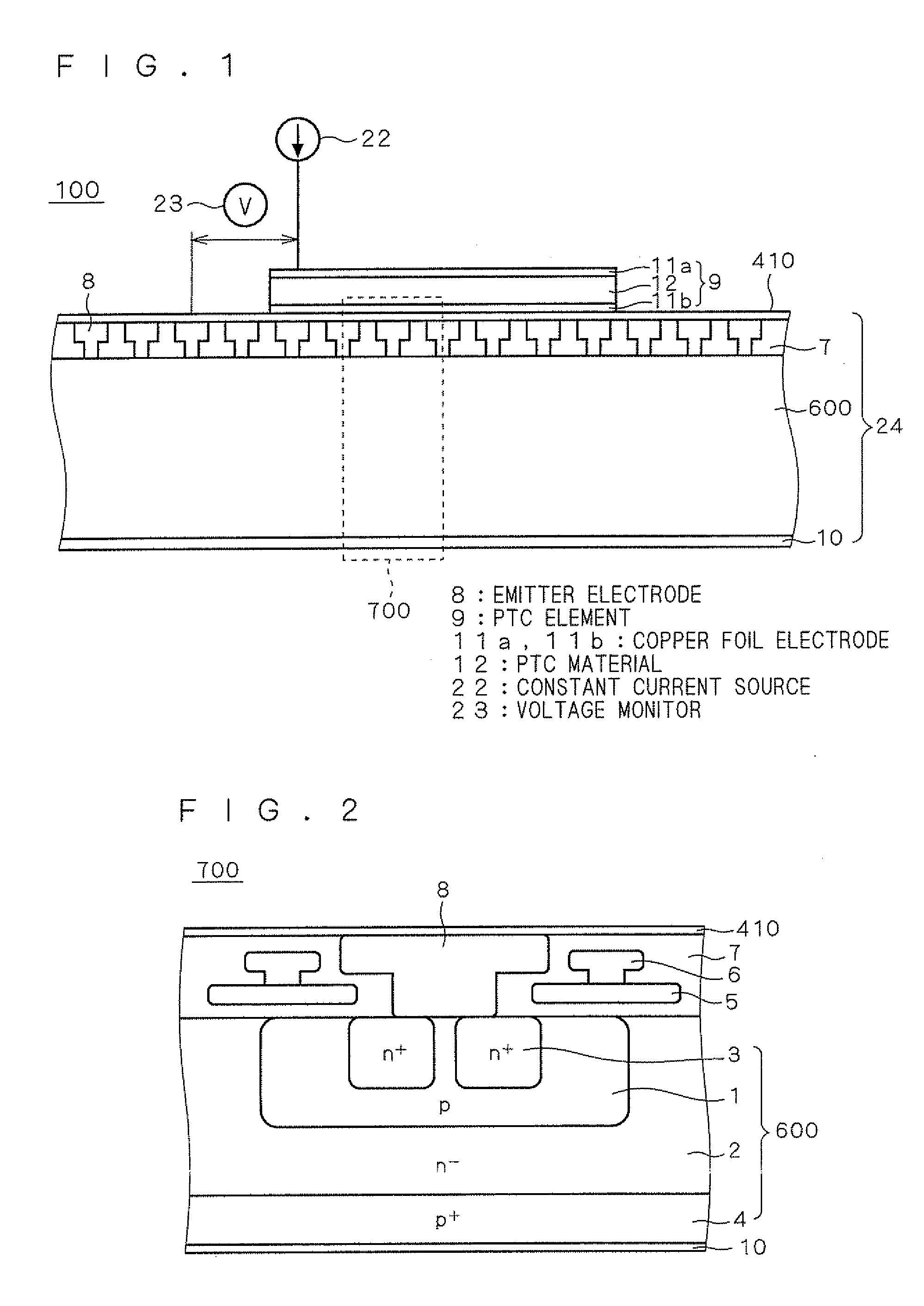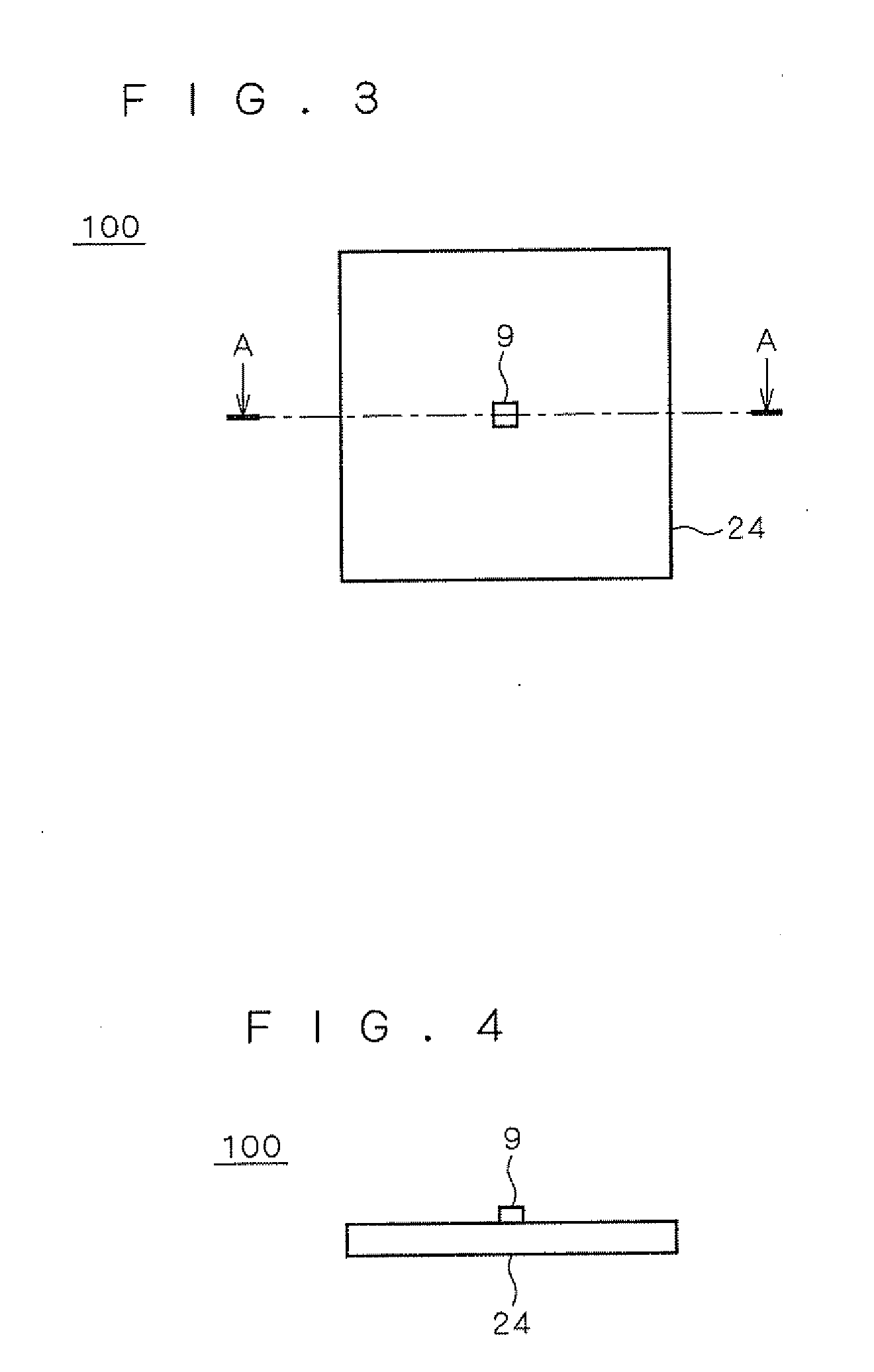Semiconductor Device
a technology of semiconductor chips and semiconductor chips, applied in the direction of instruments, heat measurement, basic electric elements, etc., can solve the problems of insufficient temperature measurement accuracy, minute electric current drowned out by noise, etc., and achieve the effect of accurate monitoring of the temperature of the semiconductor chip, high-quality detection circuits, and no need for measuremen
- Summary
- Abstract
- Description
- Claims
- Application Information
AI Technical Summary
Benefits of technology
Problems solved by technology
Method used
Image
Examples
embodiment 1
[0031]FIG. 1 is a sectional view showing a configuration of a semiconductor device 100 according to present Embodiment 1. In the semiconductor device 100 according to present Embodiment 1, a PTC (positive temperature coefficient) element (PTC temperature sensor) 9 is bonded to an IGBT (insulated gate bipolar transistor) chip 24 as a kind of semiconductor chips.
[0032] A silicon oxide film 7 is formed on the top surface of a semiconductor layer 600. A plurality of emitter electrodes 8 are formed in the silicon oxide film 7.
[0033] Here, the emitter electrodes 8 are usually connected to a ground potential.
[0034] An aluminum layer 410 for connecting the plurality of emitter electrodes 8 is formed on the emitter electrodes 8. Here, the combination of the plurality of emitter electrodes 8 and the aluminum layer 410 is understood as an emitter-side main electrode.
[0035] A PTC element 9 is bonded onto the aluminum layer 410. The PTC element 9 is a variable resistor element having a posit...
embodiment 2
[0091]FIG. 12 is a sectional view showing a configuration of the vicinity of the PTC element 9 of the semiconductor device 100 according to present Embodiment 2.
[0092] Wires 20, 21 for allowing a current to flow through the PTC element 9 are connected respectively to the copper foil electrodes 11a, 11b of the PTC element 9. A gel (protective film) 15 is then formed so as to cover the PTC element 9.
[0093] The PTC material 12 (see FIG. 1) includes the organic polymer. Therefore, when a transient temperature rise continues, the organic polymer melts, which might cause deformation. Further, the PTC material 12 is vulnerable to moisture, and when the PTC material 12 absorbs moisture, its physical properties may change. Further, it is desirable to avoid damage exerted by mechanical external force.
[0094] In present Embodiment 2, as shown in FIG. 12, the PTC element 9 is covered by the gel 15, for example. This enables prevention of deterioration in characteristic due to absorption of mo...
embodiment 3
[0096] Although the gold bump 14 was used between the copper foil electrodes 11a, 11b of the PTC element 9 and the IGBT chip 24 (see FIG. 10) in present Embodiment 1, the copper foil electrodes 11a, 11b and the surface of the IGBT chip 24 may be directly bonded to each other by the ultrasonic and thermo-compression bonding method without the use of the gold bump 14. Or an Al bump may be used in place of the gold bump 14.
[0097] In present Embodiment 3, the PTC element 9 and the IGBT chip 24 are directly bonded to each other. With the gold bump 14 not used, it is possible to reduce production cost.
[0098] In present Embodiment 3, bonding is performed by the ultrasonic and thermo-compression bonding method. Hence bonding is possible without a temperature rise. Bonding is possible with the surface having been aluminum-deposited or sputtered as often done on the surface of a semiconductor chip, thereby enabling an increase in bonding force.
PUM
 Login to View More
Login to View More Abstract
Description
Claims
Application Information
 Login to View More
Login to View More - R&D
- Intellectual Property
- Life Sciences
- Materials
- Tech Scout
- Unparalleled Data Quality
- Higher Quality Content
- 60% Fewer Hallucinations
Browse by: Latest US Patents, China's latest patents, Technical Efficacy Thesaurus, Application Domain, Technology Topic, Popular Technical Reports.
© 2025 PatSnap. All rights reserved.Legal|Privacy policy|Modern Slavery Act Transparency Statement|Sitemap|About US| Contact US: help@patsnap.com



